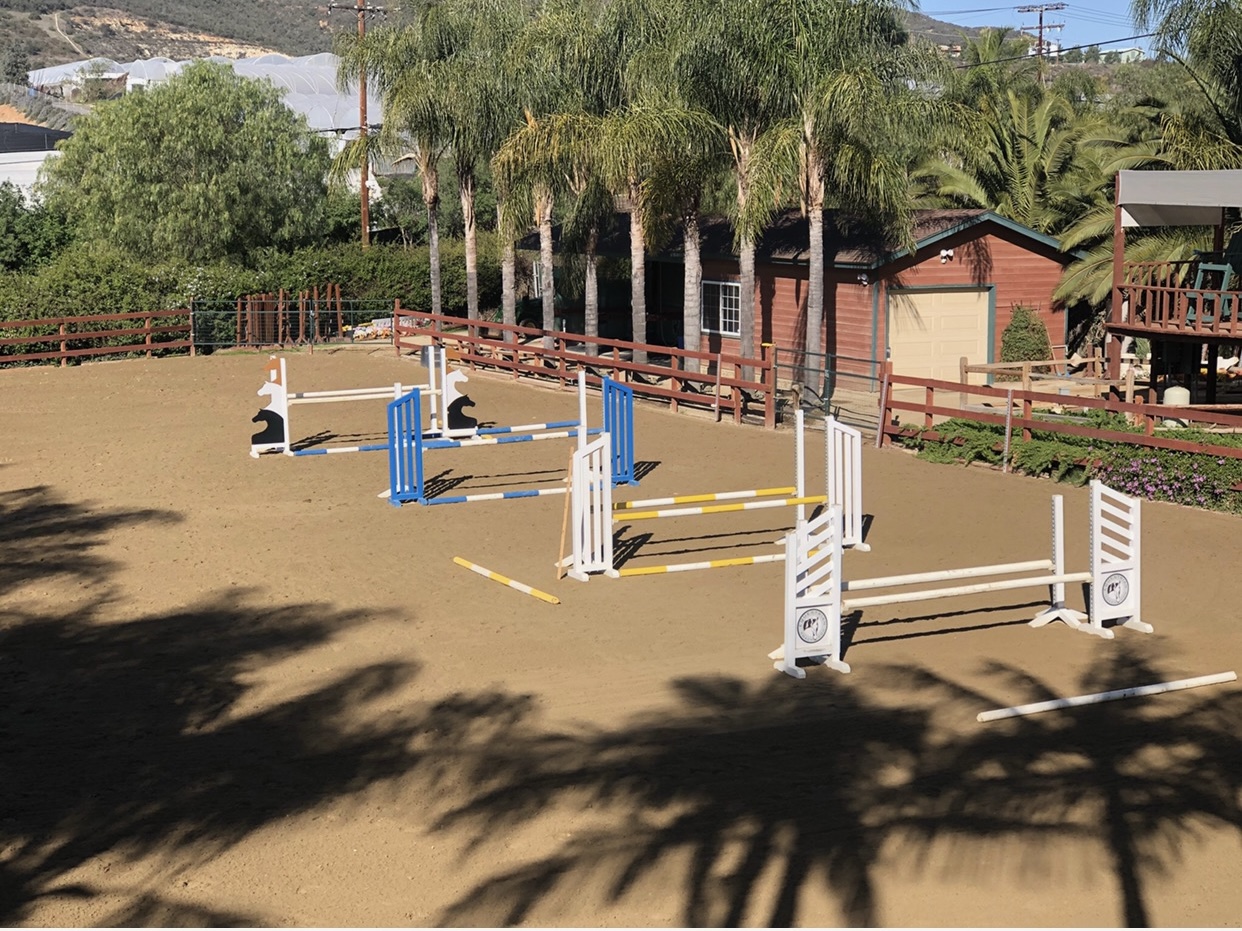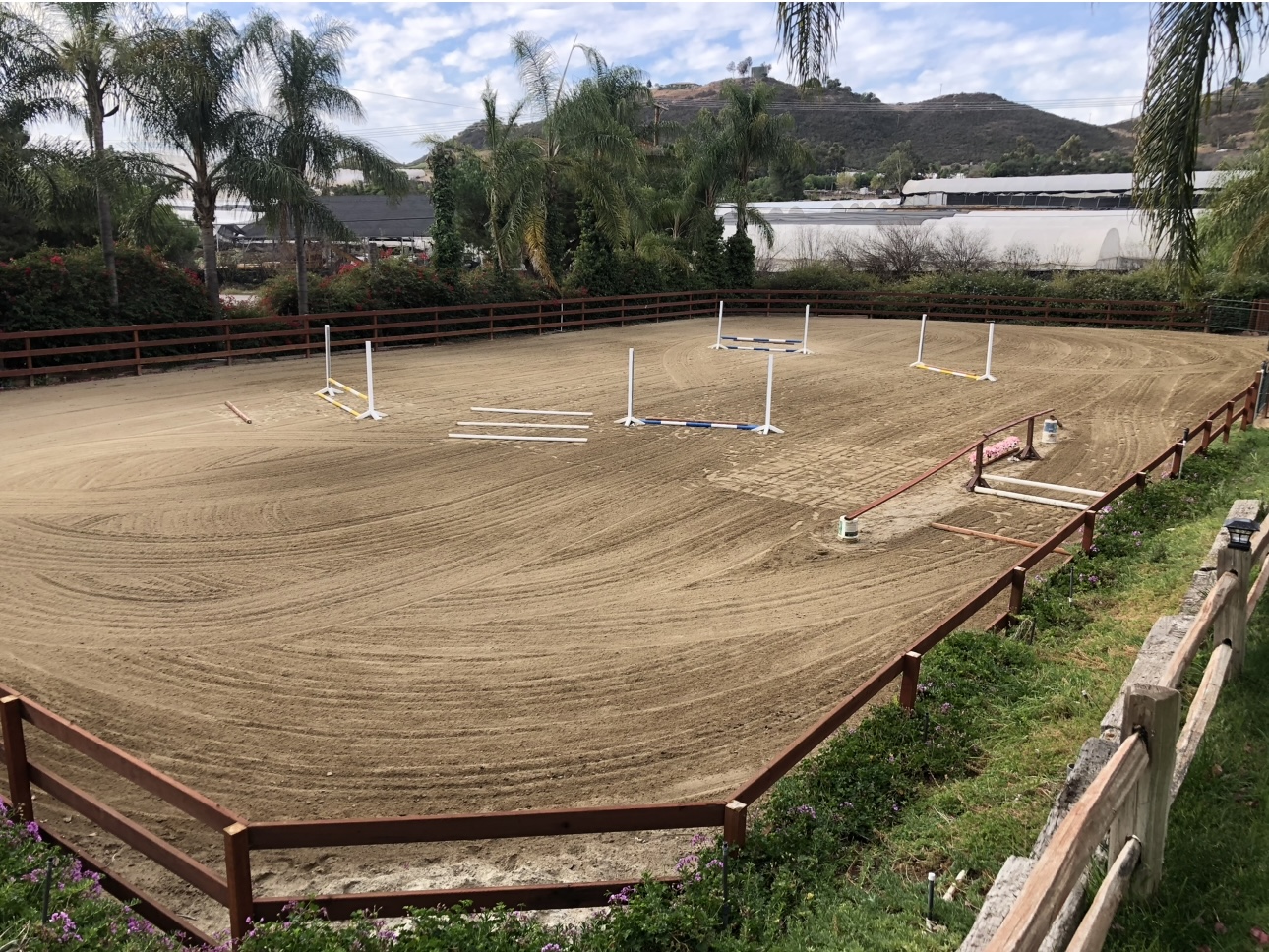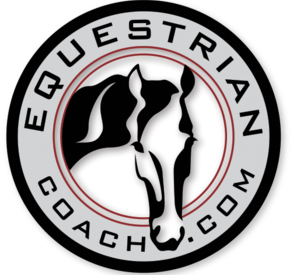Natasha Traurig Ferrara
- 14 Feb, 2024
- 0 Comments
- 6 Mins Read
Training in Small Arenas
Submitted by member: John S
I love all of your videos. One question that comes to mind—all of the training videos are mostly done on very large, open arenas (e.g. flatwork over jumps). A lot of riders and coaches are not so lucky to have so much real estate available to them. What are your suggestions on how we can improvise to do similar work in smaller arenas (i.e; going from a canter to a hand-gallop, over a small jump, to a cavaletti etc.) The shaping out is easy, it’s just not having a large enough area to execute the different paces, approaches and ride-aways that are depicted in the videos. I appreciate that trailering out to a larger venue could be an option but not always readily available or close. Any ideas/suggestions would be greatly appreciated.
Answer by: Natasha
Hi John,
Thanks for writing in. You are right–most trainers and riders do not have the luxury of training out of large arenas. Though, most of our educational videos feature training demonstrations in large arenas, the lessons and topics taught are almost always applicable in smaller arenas. Matter of fact, I have trained out of small arenas for almost my entire career.
In this post, I’ve attached some photos of the arena my father, Bernie Traurig, had at our farm. As you can see in the photos, this arena rode just slightly bigger than a dressage ring. I grew up riding in this arena and developed my career through my first Grand Prix here within its limitations. My father has produced many top riders and horses in this small ring, as well as hosted many clinics and workshops, and developed OTTBs. Ironically, after I “flew the nest,” I created a successful training business of my own out of a beautiful facility with a very small jumper ring.
Of course, it’s a pleasure and luxury to ride out of large rings or open fields, and though it can be easy to get frustrated or bored working with a small ring’s limitations, my father Bernie always said:
“If you can ride well in a small ring, you can ride in any arena.”Here are some ways I have utilized a small arena to my advantage in my own riding career, and in the training of my horses and riders. Focus on one goal or objective per schooling session. In a small ring, it can be difficult to address all practice aims combined into one schooling. A small ring simply doesn’t offer the space to build a big enough course with such complexities. I design my weekly training to include all necessary preparations for the upcoming show or to progress my horse’s development, but in a manner that is spaced out and allows for one exercise per day. So, for example, my jumper’s week may look like this:
- Tuesday
- Flatwork with a focus on creating a supple horse (rhythm, balance, suppleness, and contact)
- Wednesday
- Gymnastic day (I might set a series of bounces to work on reaction and timing while building athleticism)
- Thursday
- Flatwork with a focus on effective transitions and engagement (impulsion, collection, reaction to my aids, endurance).
- Friday
- Schooling day over fences (I will usually pick one area of weakness and design a course dedicated to improving that area).
- Saturday
- Flatwork schooling day over cavaletti or ground poles (I like to use this day to build on whatever I feel still needs repetition or improvement, but use cavaletti and ground poles so I can work on these improvements without overjumping my horse).
- Sunday and Monday
- Usually pasture days/off days

Each week, there is a game plan set ahead with a goal in mind or an area of weakness I want to improve. One week, it may be on schooling combinations. The next, galloping jumps. I found this a really helpful tactic to not overcrowd my arena with fences that do not pertain to the goal I have in mind. Placement of jumps is important when working with a small arena. Just because you cannot fit a 9-stride on the diagonal or outside line doesn’t mean a 9-stride cannot exist in a small ring. Set a fence on the short end and create a curving 9 strides to another fence at the end of the outside line or on the diagonal.
If you have trouble galloping jumps or find your rhythm gets lost in a small ring, I would set single fences off of long approaches. Set a jump on the diagonal or straightaway at the end of the arena. (Yes, you may have only three strides to turn the corner after landing.) Gallop a lap first and get the pace you want, then maintain that pace to the fence so you practice holding that stride and finding the jump out of that rhythm. Then practice this exercise backward by jumping the fence off a three-stride turn, but out of that gallop and rhythm. The same goes for any exercise or area you want to improve: build the day and the corresponding course with one objective in mind.
A triple combination exercise I like to incorporate into my training:
A rideability exercise to work on no matter the size of your ring:

Your flatwork in a large arena versus a small arena should not be a drastic difference. The factors you may want to consider most when training in a small arena are endurance and athleticism, and the timing of your aids and your horse’s reaction to them. I think it is important to be mindful and conscientious of the amount of time you spend working your horse and make a point that your flatwork is improving your horse’s physical development and athleticism in preparation for competition. Building your horse’s athleticism and endurance will tremendously help with the extra output exerted in the show ring. It’s easy to develop fitness in a large ring, but in a small ring, you have to mentally work at it and take your time with your flatwork to improve your horse’s physical development.
The benefit of training in a small arena is that your horse must learn to react quickly to your aids when transitioning forward and back, and when turning. You only have so much space to work with, so time your aids promptly, and clearly, and work on achieving bold transitions out of an engaged rhythm or “horse show pace.” You can absolutely utilize a small space to execute all paces. Gallop a single cavaletti on the long diagonal, land and collect and make a short approach to a caveletti line set as a short 4-stride, then step away and gallop another caveletti line set as a long 4-stride. Get creative!
Here is an exercise I work with all of my jumpers that you can apply in a small arena:
I also suggest checking out this video, Flatwork Over Fences, for some inspiration:
Though it is always nice to have a large arena to train and ride out of, a small arena can be of great use and advantage to you. My father trained John French and “Millenium” for the World Cup Finals out of our small ring, which turned out to be of huge benefit considering the Final’s indoor arena and atmosphere. Adapting to a small ring and developing bold transitions, a fast eye and quick turns can certainly give you the preparation for any jump-off. If you are clever with your course building, as well as your flatwork, you can achieve just as much accomplishment out of a small ring as you can with a large one. I hope this insight helps. If you would like help with anything in particular as far as flatwork exercises or schooling exercises, please feel free to contact us again!
Have Something You Want to Ask Our Panel of Experts?
Ask The Experts is the ultimate way to get help from the top professionals in the equestrian industry without leaving the comfort of your home. This service is available to Monthly, Annual, and Lifetime Members of EquestrianCoach.com.

